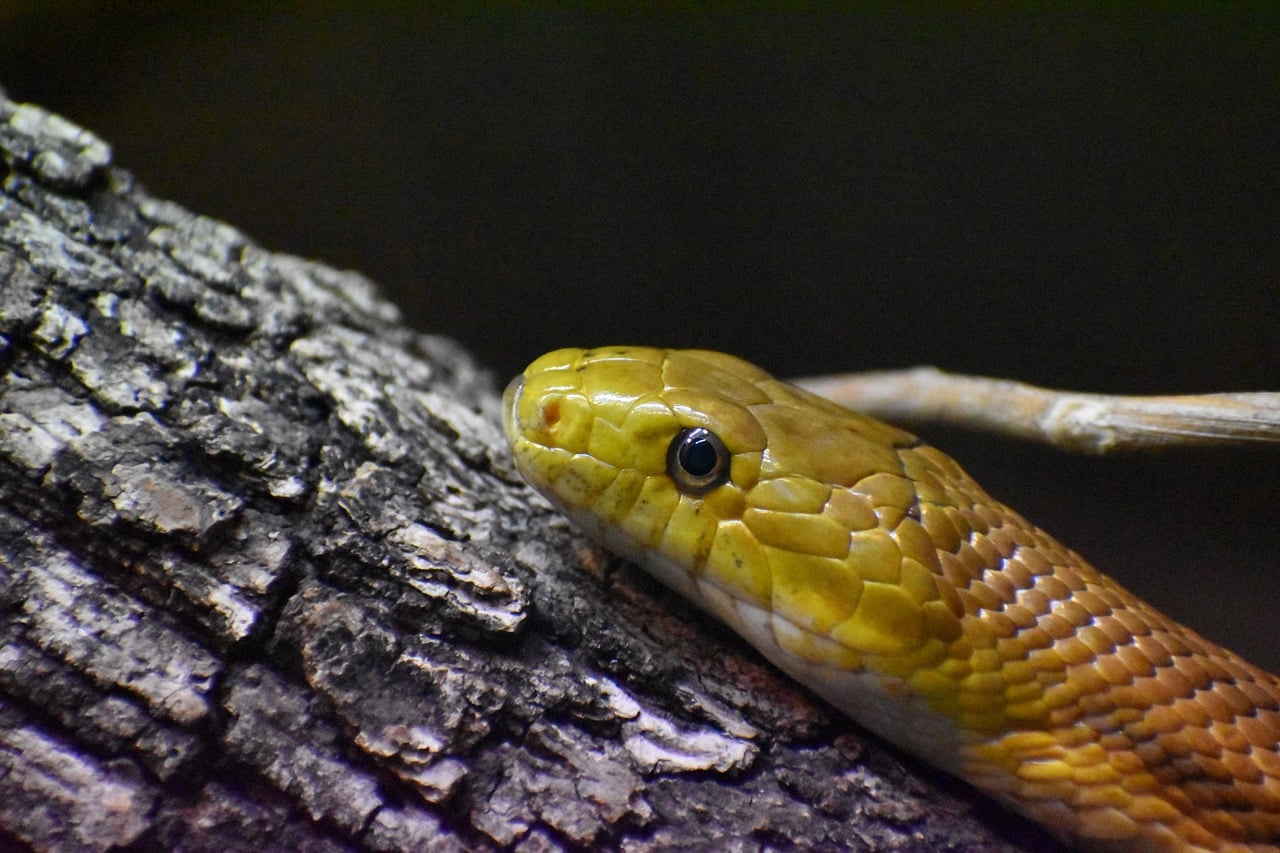How to Care for a Pet Snake During Winter?

Cooler months can be challenging, particularly for cold-blooded creatures such as snakes. As reptile enthusiasts, you’ll need to pay extra attention to the needs of your pet snake during this time. Taking care of your pet snake involves more than just feeding it and providing it with a cage. It involves monitoring and adjusting its living conditions according to seasonal changes, particularly during the cold, wintry months. This article will guide you on how to care for your pet snake during winter, including tips on temperature, humidity, feeding schedule, and more.
Adjusting the Enclosure Temperature
When it comes to reptile care, temperature plays a pivotal role. Snakes, being reptiles, are ectothermic creatures, which means they rely on their environment for heat. During winter, when temperatures drop, snakes can have a hard time maintaining their body temperature.
Dans le meme genre : What Are the Best Tips for Managing Multi-Species Households Peacefully?
To help your pet snake stay warm, you’ll need to adjust the temperature inside its enclosure. Ball python, for example, will need a basking spot with a temperature of around 88 to 96 degrees Fahrenheit even in winter. A heat lamp or a heating pad can be used to achieve the desired temperature.
Take care not to produce an excessively hot environment as it can dehydrate your snake or cause burns. Always check the temperature with a reliable thermometer. Placing the heat source on one end of the enclosure ensures the creation of a temperature gradient, allowing the snake to move to a cooler area if it becomes too hot.
Sujet a lire : What Are the Best Pet-Friendly Indoor Exercises for Cold Weather Days?
Maintaining Optimal Humidity
Humidity is another critical factor in snake care, especially during winter when indoor air can become quite dry due to heating. Each snake species has a specific humidity requirement. For instance, ball pythons thrive at a humidity level between 50 to 60 percent.
Without the right level of humidity, snakes can suffer from issues such as incomplete shedding. To increase humidity, you can mist the enclosure with water or add a larger water dish. Using a hygrometer will allow you to accurately measure the humidity level inside the cage.
Remember, too much humidity can also be detrimental. It can lead to respiratory infections in snakes. Therefore, strike a balance by monitoring the humidity level regularly and making necessary adjustments.
Feeding Your Snake in Winter
Feeding is an essential part of pet snake care. However, snakes may eat less or refuse food during winter. This is natural as their metabolism slows down in cooler temperatures.
Regardless, make sure to offer food to your snake on its regular feeding schedule. If it refuses, try again after a week. Keep in mind, some snake species, like the ball python, are known to go off feed during winter. Do not panic if your snake doesn’t eat for a few weeks.
However, if your snake has not eaten for a long time and is losing weight rapidly, it’s time to consult a reptile vet. Never attempt to force-feed your snake as it can cause more harm than good.
Choosing the Right Enclosure
The right enclosure can make a world of difference in maintaining a comfortable living environment for your pet snake during winter. Glass enclosures, while aesthetically pleasing, lose heat quickly and may not be the best choice for winter months.
On the other hand, wooden or PVC enclosures are better at retaining heat. They can help maintain the required temperature and humidity levels. Ensure the enclosure is well-ventilated but not drafty, as drafts can rapidly reduce the temperature and lead to respiratory issues in snakes.
Keeping Your Snake Hydrated
Hydration is crucial for pet snakes, more so during winter. Snakes can get dehydrated due to heating systems that dry out the air. Always provide fresh water for your snake to drink. The water dish should be large enough for the snake to soak in if it chooses to.
Ensure the water dish is always full and clean. Snakes are known to defecate in their water dish, so check it daily and clean it out as needed. If your snake is dehydrated, it may exhibit symptoms such as wrinkled skin and sunken eyes. If you notice these signs, consult a reptile vet immediately.
Taking care of a pet snake during winter can be a bit challenging, but with the right knowledge and preparation, you can ensure the well-being of your slithery friend. Monitor the temperature, humidity, and feeding habits of your snake closely, provide an appropriate enclosure, and ensure it stays hydrated. Remember, every snake is unique and will react differently to changes in the environment. If you’re ever in doubt about your snake’s health or behavior, don’t hesitate to consult a professional.
Addressing the Specific Needs of Different Snake Species
While many snake care principles remain constant across various species, it’s crucial to understand the specific needs of different types of snakes. For instance, ball pythons and garter snakes have varying requirements when it comes to temperature, humidity, and feeding preferences.
Ball pythons, as already stated, require a basking spot with a temperature of around 88 to 96 degrees Fahrenheit. They require a humidity level of 50 to 60 percent and might go off feed during winter. If a ball python refuses food, don’t panic. Wait for a week and try again. However, if the refusal persists and is accompanied by rapid weight loss, seek professional help immediately.
On the other hand, garter snakes are typically more resistant to cold weather. They can tolerate temperatures as low as 10 degrees Celsius (50 degrees Fahrenheit) in winter, although they prefer temperatures around 20-30 degrees Celsius (68-86 degrees Fahrenheit). Garter snakes generally have a higher appetite than ball pythons, and their feeding frequency should not change significantly during winter. Their humidity needs are also less specific than that of ball pythons, and they do well with moderate humidity levels.
Regardless of the species of your pet snake, you’ll need to adjust their care to meet their specific needs. Whether it’s a ball python or garter snake, every type has unique traits that you need to take into account when creating a care plan. Always refer to care sheets for specific species to ensure you’re providing the best care possible.
Watching Out for Health Problems
While you’re putting in place all these strategies to take care of your pet snake during winter, it’s equally important to keep an eye out for potential health problems. Snakes can have health issues during winter, much like guinea pigs, frogs, or turtles require specific turtle care or frog care.
Signs of health problems in snakes can vary, but some common symptoms include lethargy, loss of appetite, rapid weight loss, difficulty shedding, discolored skin, and unusual feces. Respiratory infections, caused by too much humidity or cold drafts, are common in snakes during winter. Symptoms of a respiratory infection can include labored breathing, wheezing sounds, and mucus in the mouth or nostrils.
Dehydration is another common issue during winter due to the dry air created by indoor heating. Monitor your snake for signs of dehydration, such as wrinkled skin and sunken eyes. If you suspect that your snake is dehydrated, consult a reptile vet immediately.
Remember, while Zoo Med and other reputable brands offer a range of products to help maintain the correct temperature, humidity, and overall environment for your pet snake, nothing replaces regular check-ups with a certified reptile vet. Regular vet visits can help catch any potential health issues early and keep your snake healthy and happy throughout the cold months.
Caring for a pet snake during winter requires a bit more attention and care, but with the right knowledge and preparation, it’s manageable. It’s essential to adjust the enclosure temperature, maintain optimal humidity, stick to a regular feeding schedule, and ensure that your pet stays hydrated.
Remember, each snake, be it a ball python or a garter snake, has unique needs and will react differently to changes in their environment. Always refer to care sheets specific to your snake species to provide the best care possible.
Most importantly, keep a close eye on your snake’s health during the winter months. If you observe any signs of ill-health or changes in behavior, don’t hesitate to consult a reptile vet. Your vigilance, combined with suitable care practices, can help ensure your pet snake thrives, even in the coldest months of the year.
